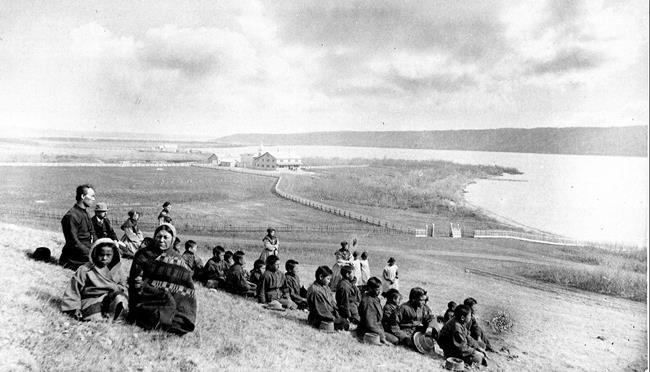STAR BLANKET CREE NATION — The Star Blanket Cree Nation in Saskatchewan says ground-penetrating radar has discovered more than 2,000 areas of interest and a child's bone at the site of one of the longest-running residential schools in the country.
“It was unthinkable. It was profound. It was sad. It was hurtful," Chief Michael Starr said Thursday.
"And it made us very angry what had happened to our young people here."
Areas for the search were selected after testimonials from former students and elders who witnessed or heard stories of what happened at the Qu’Appelle residential school.
The jawbone fragment was identified to be that of a child from about 125 years ago. It was not found anywhere near an area that was known to be a graveyard.
“This is physical proof of an unmarked grave,” said project lead Sheldon Poitras.
Poitras said his team is looking at options, including DNA testing, to confirm what is there, adding that they don't believe all are unmarked graves.
The institution was also known as the Lebret, St. Paul's and Whitecalf school. It burned down and was rebuilt twice.
Prime Minister Justin Trudeau called the discovery "difficult news."
"The work is just beginning," he said. "Of course, the federal government will help (the First Nation) every step of the way."
Crown-Indigenous Relations Minister Marc Miller said on social media that the "finding of human remains of a very young child at the site of Lebret Residential School is not only a tragic reminder of Canada’s painful history and of the heinous acts that were committed in residential schools, it’s further proof of that."
The residential school was one of the first three to open in Canada and was run by the Roman Catholic Church through the Missionary Oblates of Mary Immaculate from 1884 to 1973.
It operated for another 25 years until it closed in 1998.
An estimated 150,000 Indigenous children were forced to attend residential schools over a century in Canada and the Truth and Reconciliation Commission's final report detailed that many experienced emotional, physical, sexual and spiritual abuse.
The Qu’Appelle school often had outbreaks of disease and a high mortality rate, the commission's report found. In 1891, the Qu’Appelle school reported that since opening seven years earlier, it had discharged 174 students, 71 of whom had died.
Sharon Strongarm, a survivor of the school, held back tears as she explained how she was taken from her parents. She said she and her siblings had to learn to survive and to forgive.
"They tried to take our spirits away. They tried to take the Indian out of us," she said. "But thank the Creator we are back here, strong as we will ever be, helping each other.”
The Indian Residential Schools Resolution Health Support Program has a hotline to help residential school survivors and their relatives suffering trauma invoked by the recall of past abuse. The number is 1-866-925-4419.
This report by The Canadian Press was first published Jan. 12, 2023.
— By Kelly Geraldine Malone in Saskatoon
The Canadian Press



